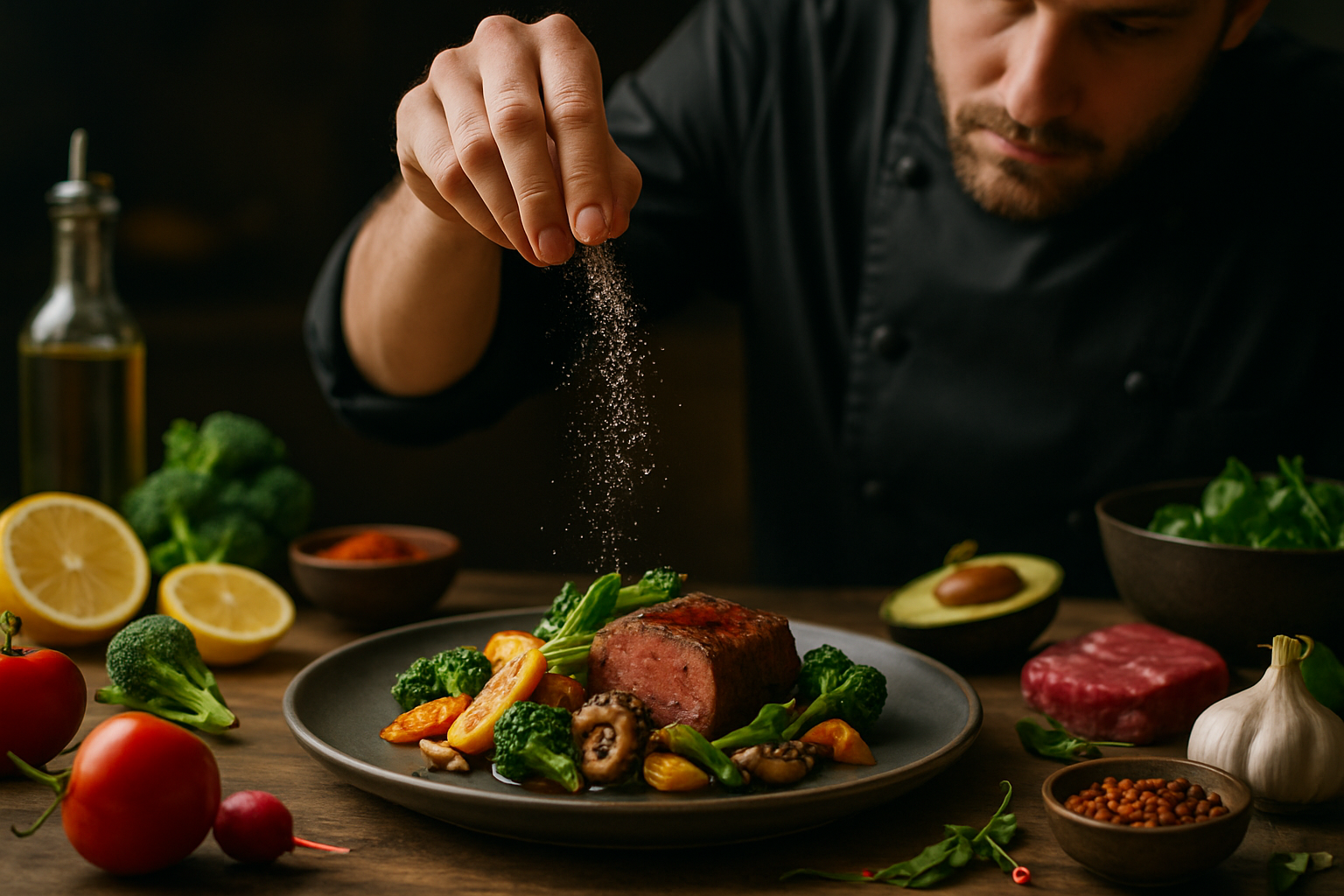Umami Alchemy: Transforming Everyday Dishes with Flavor Bombs
Elevate your culinary game with the art of umami alchemy. Discover how to infuse depth and richness into everyday meals using unexpected ingredients and techniques. From homemade flavor boosters to secret seasoning tricks, this guide will revolutionize your approach to cooking and elevate even the simplest dishes to gourmet status.

Crafting Umami-Rich Flavor Bombs
At the heart of umami alchemy are flavor bombs – concentrated bursts of savory goodness that can be added to dishes for an instant flavor boost. One of the most versatile umami bombs is a homemade mushroom powder. Simply dehydrate a variety of mushrooms, then grind them into a fine powder using a spice grinder. This intensely flavored powder can be sprinkled into soups, sauces, and marinades, or used as a seasoning for roasted vegetables and grilled meats. Another potent flavor bomb is miso butter. Blend equal parts softened butter and miso paste, then roll into a log and refrigerate. Slice off coins of this umami-rich compound butter to melt over steaks, fish, or even corn on the cob for an instant flavor upgrade.
Unlocking Umami in Unexpected Places
While certain ingredients are well-known for their umami content, there are many unexpected sources of this flavor-enhancing taste. Nutritional yeast, often used in vegan cooking, is a powerhouse of umami flavor. Sprinkle it over popcorn, roasted vegetables, or mix it into dips for an instant savory boost. Another surprising umami source is dried seaweed. Crush nori sheets into flakes and use them as a seasoning for rice, soups, or salads. Even everyday condiments like Worcestershire sauce and fish sauce are packed with umami potential. Add a dash to marinades, dressings, or gravies to deepen their flavor profiles.
The Art of Umami Layering
To truly master umami alchemy, it’s essential to understand the concept of flavor layering. This technique involves combining multiple umami-rich ingredients to create a complex, multi-dimensional taste experience. Start with a base of sautéed onions and garlic, then add layers of umami with ingredients like sun-dried tomatoes, anchovies, and aged Parmesan cheese. Each layer builds upon the last, creating a depth of flavor that’s greater than the sum of its parts. This technique works particularly well in slow-cooked dishes like stews, braises, and sauces, where the flavors have time to meld and develop.
Umami Hacks for Quick Flavor Fixes
Sometimes, you need a quick umami fix to elevate a dish in a hurry. That’s where these clever hacks come in handy. Keep a bottle of soy sauce or tamari in your pantry for an instant umami boost – a few drops can transform a bland soup or sauce. Parmesan rinds are another secret weapon; toss one into simmering soups or stews for added depth. For a vegetarian-friendly option, sun-dried tomato paste is a concentrated source of umami that can be stirred into pasta sauces or spread on sandwiches. Even a dollop of miso paste can work wonders in non-Asian dishes, adding complexity to everything from mashed potatoes to salad dressings.
Umami Alchemy Tips & Facts
• Umami was first identified as a distinct taste in 1908 by Japanese chemist Kikunae Ikeda
• The umami taste is detected by specific receptors on our tongues that respond to glutamates
• Fermented foods like kimchi, sauerkraut, and aged cheeses are naturally high in umami
• Cooking techniques like roasting, grilling, and caramelizing can increase the umami content of foods
• Umami has a synergistic effect when combined with salt, enhancing the overall flavor perception
Conclusion
Mastering the art of umami alchemy opens up a world of culinary possibilities. By understanding how to harness and amplify this fifth taste, you can transform everyday ingredients into extraordinary dishes. From crafting flavor bombs to layering umami-rich ingredients, these techniques will elevate your cooking and delight your taste buds. As you experiment with umami alchemy in your own kitchen, remember that the key is balance and subtlety. Let umami enhance and support other flavors, rather than overpowering them. With practice and creativity, you’ll soon be creating your own umami masterpieces that will impress family and friends alike.





